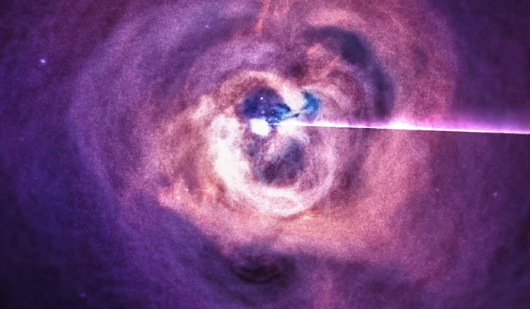
In space, no one can hear you scream – unless you’re a supermassive black hole.
NASA made this very apparent on Sunday, sharing what the agency described as the sound of a black hole, available to human ears in listenable format.
And if you’re wondering how the hell does sound travel in the vacuum of space, NASA has an explanation.
“The misconception that there is no sound in space originates because most space is a ~vacuum, providing no way for sound waves to travel. A galaxy cluster has so much gas that we’ve picked up actual sound. Here it’s amplified, and mixed with other data, to hear a black hole,” NASA’s account dedicated to exoplanets tweeted.
The galaxy cluster you’re “hearing” is Perseus, the data comes from NASA’s Chandra X-ray Observatory, and the recording was released back in May for NASA’s Black Hole Week. As NASA explained it back then, “Astronomers discovered that pressure waves sent out by the black hole caused ripples in the cluster’s hot gas that could be translated into a note — one that humans cannot hear some 57 octaves below middle C.”
To us, it just sounds like a beginning of a very sinister dubstep track.
Black holes can be “sonified” in much more pleasing ways, though. NASA also has a sonification of the black hole located around 54 million light years away at the center of Galaxy Messier 87, or M87 (you can listen below). Yes, this is the one captured in humanity’s first image of a black hole through the Event Horizon Telescope. The track uses data captured from several telescopes — the Chandra X-ray Observatory, NASA’s Hubble Space Telescope, and the Atacama Large Millimeter Array (ALMA) in Chile — and maps the wavelengths to a different range of audible tones. The result, while very far from actual sound a black hole makes, is something you might enjoy at your next yoga session.
NASA has produced similar sonifications of a distant galaxy and the sound of each time an exoplanet was discovered. The agency has even recorded the eerie, extraterrestrial sounds of Mars.
